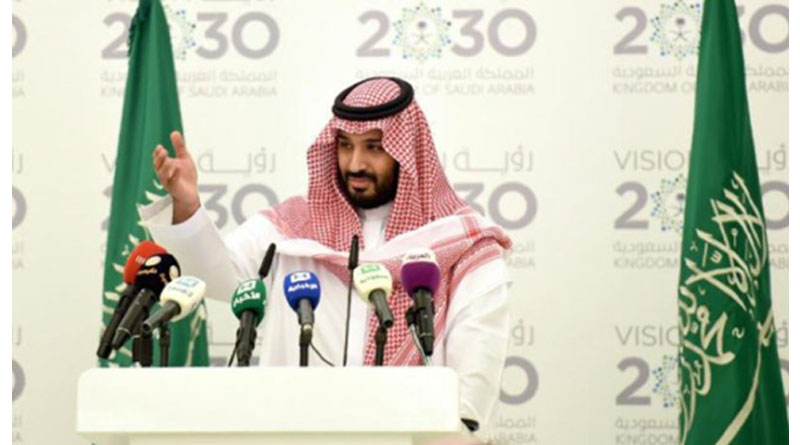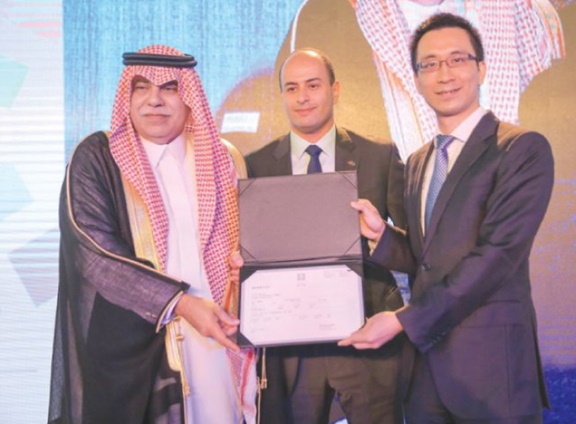End of Oil Dependence Towards a New Economy

Image Caption: Deputy Crown Prince Muhammad Bin Salman vows to diversify sources of income as part of Vision 2030
By Layan Damanhouri
Saudi Gazette
Ever since Saudi Arabia vowed to diversify its sources of income in efforts to cut its dependence on oil, the government underwent major reshuffles in the past months, driving its citizens as well as the international media to witness the Kingdom’s will to modernize.
Saudi Arabia traditionally relies on oil for most of its revenue. The government recently revealed the green card policy, fees to exceed worker quotas and a value-added tax that is soon to be introduced and will generate SR10 billion each. Subsidy reforms further are expected to generate SR30 billion. Other measures will be implemented to generate a total of SR100 billion per year in non-oil revenue in the next five years.
The Ministry of Petroleum and Minerals has been transformed into the Ministry of Energy, Industry And Mineral Resources, since the architect of the Vision 2030 Deputy Crown Prince Muhammad Bin Salman, second deputy premier and minister of defense, announced his decry against Saudi Arabia’s “addiction” to oil, blaming it for delaying other sectors to develop in the past years.
The Ministry of Energy, Industry, and Mineral Resources seeks to increase non-oil commodities exports to SR330 billion by 2020. It also aims to attract investors, ending a recent trip to China and Japan where cooperation was made in a wide range of sectors last month. Chinese investors were invited to seek opportunities in e-commerce, transportation, logistics and information technology, among others.
This goes in line with the National Transformation Plan that revealed plans to partner with the private sector to develop the telecommunications and information technology infrastructure and bring about a digital transformation.

A recent outcome was a deal with Chinese networking and telecommunications equipment and services provider Huawei Technologies Co gaining a 100% foreign ownership trade license, which would allow the company to access the retail and wholesale markets in the country.
Some MoUs signed in China laid the ground for deeper energy cooperation between Saudi Arabia and China. Saudi Aramco and China National Petroleum Corp signed an agreement to collaborate on downstream investment and project development.
In addition, the Royal Commission for Jubail and Yanbu and Saudi Aramco collaborated with Yinchuan Yucheng Investment Co and Guangzhou Industrial Development Group Corp to invest in Jazan Economic City and other transport and logistics hubs in the country.
Similarly, cooperation was made in various non-oil sectors with Japanese counterparts, including in energy, trade, and culture during the last official visit by Deputy Crown Prince Muhammad Bin Salman earlier this month.
“Gold, phosphate, uranium, and many other valuable minerals are found beneath our land. But our real wealth lies in the ambition of our people and the potential of our younger generation,” said Deputy Crown Prince Muhammad in an interview with Alarabiya in April.
With diversification of income comes job-creation. 450,000 new jobs for Saudis are expected to be available by 2020.
One step to treat the unemployment rate among Saudi youth has been the reforms made towards the small and medium enterprises. An authority headed by the minister of commerce and industry has been established to ease bureaucratic obstacles to entrepreneurs as well as create a better business environment. The Public Authority for Small and Medium Enterprises aims to promote growth of SMEs by launching reforms as well as increase female participation and create more jobs.
The retail sector is expected to increase the contribution of modern trade and e-commerce to 80 percent by 2020 by attracting regional and international investors and by easing restrictions on ownership and foreign investment.
The Vision 2030 listed plans to develop in other various sectors. The manufacturing sector seeks to localize renewable energy and industrial equipment sectors. In the tourism and leisure sectors, the Kingdom wants to create attractions “that are of the highest international standards”, improve visa issuance procedures for visitors, and prepare and develop our historical and heritage sites.
The tourism sector is not at its full potential yet. The Kingdom’s strategic location serves as a hub connecting three continents and a religious hub hosting the two Islamic holy sites that accommodates an average of up to 18 million visitors annually.
Haj and Umrah are high season for religious tourists and pilgrims. The government has spent around $13 million a year renovating historical sites as well as investing in new hotels. The tourism sector has created more than 100,000 jobs for Saudis within a short span, according to a local daily. Revenue from the tourism, Umrah and Haj sector is expected to grow by SR35 billion during the next five years through cultural, historical and medical tourism. The total number of pilgrims who come for Haj and Umrah is estimated at between 7.3 million to 7.5 million, contributing SR57 billion to the GDP, a local daily said.
With its previous revenue from one public-private partnership at SR80 million, the Ministry of Haj aims to raise the number to 17 partnerships to generate SR19 billion by 2020. This will also allow the increase of Umrah pilgrims from abroad to double to up to 15 million visitors.
In the Western Province, the Kingdom recently started new transportation projects including Jeddah’s new airport, Taif’s airport, the Haramain Train, and the Makkah Metro.
Additionally, land surrounding the Grand Mosque that are government-owned and private will be invested to create accommodation for large numbers. Plans to change the tourism scene are evident with the announcement of opening the largest Islamic museum in the world.
Exploration in mineral resources will be further conducted. Recent efforts include the establishment of a production center for medium and light industries in Hawtat Bani Tamim and Daba to make use of hydrocarbon and mineral resources available in the region.
Thirteen ministries were privatized in the last months, with the healthcare and service sectors in the forefront. The government’s goal is to increase the private sector’s contribution from 40% to 65% of GDP.
The IMF projected in July that Saudi Arabia’s GDP growth will slow to 1.2 percent this year from 3.5 percent in 2015 but recover to 2 percent in 2017.
(Source: SaudiGazette.com.sa)



